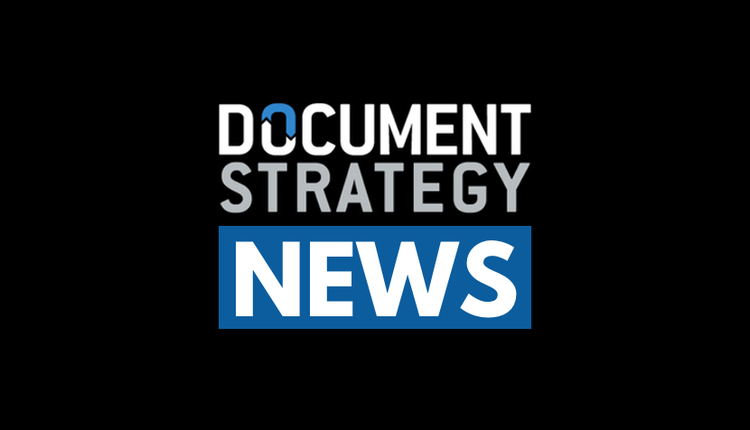Enterprise architects looking to help their business improve the customer experience must realize the potential of document output for customer communications management (DOCCM). While savings from DOCCM are varied and sometimes subtle, a little digging is well worth it. Enterprises making the investment are seeing the benefits—and quickly.
Customer retention is now part of the DOCCM return on investment (ROI) conversation. Consistent, clear and targeted language can help retain customers. No surprise. This is a growing focus of enterprises we speak to.
Improved language reduces incoming call volume. Metrics that drive companies to speak less to their customers are part of yesterday's process focus. That being said, it does an enterprise no good to have meaningless conversations created by poor communications. One health insurance company measured and compared the call durations for the old and newly designed explanation of benefit (EOB) correspondence. It found that calls with the simpler, clearer and more targeted statements were shorter.
DOCCM software supports content types such as letterhead, invoices, correspondence, marketing materials, policies, statements and welcome kits. The list goes on—and most of these communications categories are causing pain or in transition at enterprises. Recently, there has been a renewed focus on language consistency in customer communications, addressing visuals (such as logos, images and other brand elements) and content (such as the degree of personalization, language and contact information). Focusing narrowly on production costs misses the value to this renewed focus. In short, customer service and business benefits are now driving the investment rational for DOCCM.
Customer retention is now part of the DOCCM return on investment (ROI) conversation. Consistent, clear and targeted language can help retain customers. No surprise. This is a growing focus of enterprises we speak to.
Improved language reduces incoming call volume. Metrics that drive companies to speak less to their customers are part of yesterday's process focus. That being said, it does an enterprise no good to have meaningless conversations created by poor communications. One health insurance company measured and compared the call durations for the old and newly designed explanation of benefit (EOB) correspondence. It found that calls with the simpler, clearer and more targeted statements were shorter.
|
Simplifying letter changes saves tons. Correspondence management is a fundamental business function for most enterprises. Employees retrieve documents, enter data and make selections that alter and personalize the output. We found that most enterprises are mired in older processes that use MS Word with custom-developed macros, output functions buried in legacy systems or older DOCCM systems. As a result, few companies can make routine changes, e.g., altering a template, editing text for a paragraph or change a simple communication rule effectively. Most of these changes are done by IT and not the business. As a result, business-side control for these changes is a key driver of many current business cases. For example, one credit card company took 162 days to make a change to a letter with three different groups involved—not a sustainable business process with consumers expecting real-time communications. Modern DOCCM systems simplify the steps and put the business in control.
Greatly improved template management adds to the kitty. Companies can use thousands of templates for documents, such as contracts, policies, account notices and correspondence, marketing collateral and proposals. Enterprises must update versions and track templates and individual document fragments, such as a logo. Today, most enterprises store them in different environments and use an average of six separate point solutions to manage them. DOCCM implementations replace these separate systems with a centralized solution.
IT is under pressure, like all enterprise areas, to do more with less. Reduced time to develop output solutions is a ripe area today, particularly as IT needs more resources to focus on newer electronic forms of communication. System consolidation reduces development resource needs and frees up support resources. It is clear that:
- DOCCM consolidation gives IT some resource relief. The consolidation of DOCCM systems is a focus of enterprises we speak to. To help, EAs must identify redundant systems and fill gaps in existing capability. We spoke to one company that had over 50 systems to generate retirement planning kits. Cleaning out the garage is always difficult, but it is made easier when tied to a broader customer communications management (CCM) governance program that organizes DOCCM use cases into categories.
- The business wants more control of the communication process. Today's DOCCM products still require IT intervention to make key changes to templates, business rules and authoring workflow, as well as to insert content into print streams. Enterprises want to reduce reliance on more costly IT resources. Also, companies want highly skilled IT development resources to concentrate on connecting core systems and enhancing customer-facing and supporting applications.
- Upgrades are painful and expensive, but newer technology generates deployment savings. Thirty percent of the inquiries Forrester receives on DOCCM concern upgrades. DOCCM systems have been in place for decades and have been highly customized. The talent to enhance or change the system has often vanished. One enterprise we spoke to was exposed to risk by having only one individual that understood a business-critical DOCCM system. Many legacy CCM vendors have declared their systems "end of life" and will no longer support them. These older systems need to be replaced. Tangible ROI can be generated with newer DOCCM systems that reduce the time for IT to design, develop and deploy an application.















